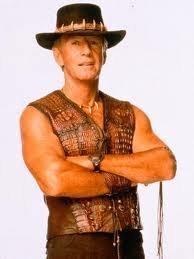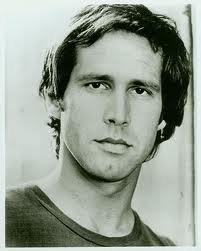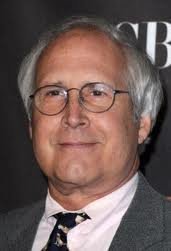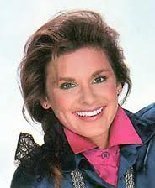Shampoo is a hair care product, typically in the form of a viscous liquid, that is used for cleaning hair. Less commonly, shampoo is available in solid bar format. Shampoo is used by applying it to wet hair, massaging the product into the scalp, and then rinsing it out. Some users may follow a shampooing with the use of hair conditioner.
Shampoo is typically used to remove the unwanted build-up of sebum in the hair without stripping out so much as to make hair unmanageable. Shampoo is generally made by combining a surfactant, most often sodium lauryl sulfate or sodium laureth sulfate, with a co-surfactant, most often cocamidopropyl betaine in water. The sulfate ingredient acts as a surfactant, trapping oils and other contaminants, similarly to soap.
Shampoos are marketed to people with hair. There are also shampoos intended for animals that may contain insecticides or other medications to treat skin conditions or parasite infestations such as fleas.
Etymology
The word shampoo entered the English language from the Indian subcontinent during the colonial era. It dated to 1762 and was derived from the Hindi word cā̃pō (चाँपो, pronounced [tʃãːpoː]), itself derived from the Sanskrit root capati (चपति), which means 'to press, knead, or soothe'.
Specialized shampoos
Dandruff
Cosmetic companies have developed shampoos specifically for those who have dandruff. These contain fungicides such as ketoconazole, zinc pyrithione and selenium disulfide, which reduce loose dander by killing fungi like Malassezia furfur. Coal tar and salicylate derivatives are often used as well. Alternatives to medicated shampoos are available for people who wish to avoid synthetic fungicides. Such shampoos often use tea tree oil, essential oils or herbal extracts.
Colored hair
Many companies have also developed color-protection shampoos suitable for colored hair; some of these shampoos contain gentle cleansers according to their manufacturers.
Baby
Shampoo for infants and young children is formulated so that it is less irritating and usually less prone to produce a stinging or burning sensation if it were to get into the eyes. For example, Johnson's Baby Shampoo advertises under the premise of "No More Tears". This is accomplished by one or more of the following formulation strategies.
- dilution, in case the product comes in contact with eyes after running off the top of the head with minimal further dilution
- adjusting pH to that of non-stress tears, approximately 7, which may be a higher pH than that of shampoos which are pH adjusted for skin or hair effects, and lower than that of shampoo made of soap
- Use of surfactants which, alone or in combination, are less irritating than those used in other shampoos (e.g. Sodium lauroamphoacetate)
- use of nonionic surfactants of the form of polyethoxylated synthetic glycolipids and polyethoxylated synthetic monoglycerides, which counteract the eye sting of other surfactants without producing the anesthetizing effect of alkyl polyethoxylates or alkylphenol polyethoxylate.
The distinction in 4 above does not completely surmount the controversy over the use of shampoo ingredients to mitigate eye sting produced by other ingredients, or the use of the products so formulated. The considerations in 3 and 4 frequently result in a much greater multiplicity of surfactants being used in individual baby shampoos than in other shampoos, and the detergency or foaming of such products may be compromised thereby. The monoanionic sulfonated surfactants and viscosity-increasing or foam stabilizing alkanolamides seen so frequently in other shampoos are much less common in the better baby shampoos.
Sulfate-free shampoos
Sulfate-free shampoos are composed of natural ingredients and free from both sodium lauryl sulfate and sodium Laureth sulfate. These shampoos use alternative surfactants to cleanse the hair.
Animal
Shampoo intended for animals may contain insecticides or other medications for treatment of skin conditions or parasite infestations such as fleas or mange. These must never be used on humans. While some human shampoos may be harmful when used on animals, any human hair care products that contain active ingredients or drugs (such as zinc in anti-dandruff shampoos) are potentially toxic when ingested by animals. Special care must be taken not to use those products on pets. Cats are at particular risk due to their instinctive method of grooming their fur with their tongues.
Shampoos that are especially designed to be used on pets, commonly dogs and cats, are normally intended to do more than just clean the pet's coat or skin. Most of these shampoos contain ingredients which act different and are meant to treat a skin condition or an allergy or to fight against fleas.
The main ingredients contained by pet shampoos can be grouped in insecticidals, antiseborrheic, antibacterials, antifungals, emollients, emulsifiers and humectants. Whereas some of these ingredients may be efficient in treating some conditions, pet owners are recommended to use them according to their veterinarian's indications because many of them cannot be used on cats or can harm the pet if it is misused. Generally, insecticidal pet shampoos contain pyrethrin, pyrethroids (such as permethrin and which may not be used on cats) and carbaryl. These ingredients are mostly found in shampoos that are meant to fight against parasite infestations.
Antifungal shampoos are used on pets with yeast or ringworm infections. These might contain ingredients such as miconazole, chlorhexidine, providone iodine, ketoconazole or selenium sulfide (which cannot be used on cats).
Bacterial infections in pets are sometimes treated with antibacterial shampoos. They commonly contain benzoyl peroxide, chlorhexidine, povidone iodine, triclosan, ethyl lactate, or sulfur.
Antipruritic shampoos are intended to provide relief of itching due to conditions such as atopy and other allergies. These usually contain colloidal oatmeal, hydrocortisone, Aloe vera, pramoxine hydrochloride, menthol, diphenhydramine, sulfur or salicylic acid. These ingredients are aimed to reduce the inflammation, cure the condition and ease the symptoms at the same time while providing comfort to the pet.
Antiseborrheic shampoos are those especially designed for pets with scales or those with excessive oily coats. These shampoos are made of sulfur, salicylic acid, refined tar (which cannot be used on cats), selenium sulfide (cannot be used on cats) and benzoyl peroxide. All these are meant to treat or prevent seborrhea oleosa, which is a condition characterized by excess oils. Dry scales can be prevented and treated with shampoos that contain sulfur or salicylic acid and which can be used on both cats and dogs.
Emollient shampoos are efficient in adding oils to the skin and relieving the symptoms of a dry and itchy skin. They usually contain oils such as almond, corn, cottonseed, coconut, olive, peanut, Persia, safflower, sesame, lanolin, mineral or paraffin oil. The emollient shampoos are typically used with emulsifiers as they help distributing the emollients. These include ingredients such as cetyl alcohol, laureth-5, lecithin, PEG-4 dilaurate, stearic acid, stearyl alcohol, carboxylic acid, lactic acid, urea, sodium lactate, propylene glycol, glycerin, or polyvinylpyrrolidone.
Although some of the pet shampoos are highly effective, some others may be less effective for some condition than another. Yet, although natural pet shampoos exist, it has been brought to attention that some of these might cause irritation to the skin of the pet. Natural ingredients that might be potential allergens for some pets include eucalyptus, lemon or orange extracts and tea tree oil. On the contrary, oatmeal appears to be one of the most widely skin-tolerated ingredients that is found in pet shampoos. Most ingredients found in a shampoo meant to be used on animals are safe for the pet as there is a high likelihood that the pets will lick their coats, especially in the case of cats.
Pet shampoos which include fragrances, deodorants or colors may harm the skin of the pet by causing inflammations or irritation. Shampoos that do not contain any unnatural additives are known as hypoallergenic shampoos and are increasing in popularity.
- 1 (16-ounce) cornbread or cornbread muffins
- 1/2 cup (1 stick) butter, melted
- 1 pound frozen breaded chicken tenderloins, baked according to package directions
- 3 cups frozen mixed vegetables, thawed
- 1 (24-ounce) jar chicken gravy
- Preheat oven to 350º. Coat a 9- x 13-inch baking dish with cooking spray.
- In a food processor, pulse cornbread into fine crumbs. Place crumbs in a large bowl; add butter and mix well. Reserve 2 tablespoons crumbs. Press remaining crumbs into baking dish to form crust. Bake 10 minutes.
- Cut chicken into 1-inch pieces and place in a large bowl. Add vegetables and gravy to chicken; mix well. Pour over crust; sprinkle with reserved crumbs.
- Bake 25 to 30 minutes, or until hot and bubbly.
1943 – Chevy Chase, American comedian and actor
1949 – Sigourney Weaver, American actress
1956 – Stephanie Zimbalist, American actress
1970 – Matt Damon, American actor
On October 8th, National Hero Day honors the people we look up to and who inspire us to be the best person we can possibly be.
If asked to define the word hero, many of us will name the qualities that demand a person rise above, the qualities that genuinely drive a person to be stronger, smarter, kinder and more than the average human being. They are the people who give when they have nothing to give. Heroes act before anyone else realizes there’s a problem. They volunteer to put someone else before them.
Our heroes may be the first responders who save us from a dangerous situation. They may be a mentor, like a parent or a teacher. As role models, heroes guide us through the examples they set. They live their lives in such a way that we’re honored to know them and hope to live up to their example.
And heroes, real-life heroes, rarely get recognized. That’s why National Hero Day encourages you to recognize the heroes in your life.
Heroes All Around Us
Some wear uniforms, like Christy McIntosh of Pensacola, FL who served in the U.S. Army Reserves. Or like high-school football player Zac Clark of Ohio whose quick thinking and strength lifted a Volkswagen off of his neighbor, saving his life.
Other heroes spur us to action or to lead a better life. They may do this through their words like Jim Cook of Oklahoma who wrote to columnist Jim Priest, teaching him a little something about character and love. A real-life hero might take us on a journey we can only imagine taking. Like Dr. Garrett Reisman, a former NASA astronaut and engineer who later joined SpaceX.
Another kind of hero makes things happen. Whether it’s filling a need or making the impossible happen, some heroes go to amazing lengths to get a job done. For example, Donald Harris of New Jersey who by day was a real estate manager but at Christmastime answered a letter to Santa via the U.S. Postal Service’s Letters to Santa program. His answer to a request to make a father’s life easier was to enlist his associates in obtaining a townhouse for the family at a much lower rent.
Heroes come in many forms, you see. They rescue us, inspire us, and most of all, they believe in us.
HOW TO OBSERVE
Honor the heroes in your life. Give them a shout-out on social media or bring them coffee from their favorite coffee shop. Bake some cookies or write them a letter. Let them know how much they inspire you, how much you appreciate them. Be a hero in someone’s life, too. Use your talent to teach someone a vital skill. Other ways to be heroic include:
- Donating blood
- Volunteering
- Giving to a charity that serves those in need
- Organize a fundraiser for a non-profit organization
- Listen to the needs of others and fill the void












